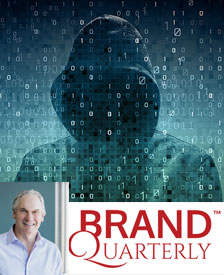*****The following article, by Jeff Finn, appears within the Brand Management and Digital Marketing section of Brand Quarterly’s web site and was originally published on April 11, 2017.
In the wake of realizing that Google, even with all of its impressive tools, failed to prevent all ads purchased programmatically from appearing alongside terrorist and hate group content, what’s the next move for brands (and for ad tech)? Will the subsequent boycotts – through which brands are rightfully voicing outrage at having been exposed to unpleasant associations – cause things to demonstrably change? History has thus far told another story, but I’m optimistic the current groundswell in brand frustration will have an impact that’s long overdue.
Ads served to websites with content that is inconsistent with a brand’s image – especially content that is near-universally offensive – go beyond embarrassment. A single screen grab shared across Twitter can now generate an immediate backlash, instantly tarnishing the image a brand has spent years (and countless marketing dollars) to hone. With a goal (and, really, an assumption) of avoiding these incidents, brands have looked to the walled gardens of trusted video and/or display networks (like Google’s).
There’s generally been a belief that these platforms – with their own brands to protect – must have superior capabilities for categorizing inappropriate content and ensuring brand safety. But the major display networks are generally not doing a satisfactory job of policing content, and haven’t been for some time.
I’d argue it’s actually the demand-side platforms (DSPs) and other providers that enable programmatic ad buys who have best recognized the risks brands face, and who have implemented the most effective solutions to address the issue to date. For a premium charge, most DSPs will utilize real-time categorization tools that can scan ad requests and check that placements are safe for a given brand (with relatively few false negatives). So, for brands working with DSPs, there’s a decision: pay extra to minimize risks to your brand equity, or accept the risks and save some budget. Most often, brands select to run ads without these protections. However, given the new attention that this (not at all new) problem is receiving, brand decision-making around these protections may finally evolve.






